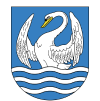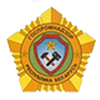Pages of history
The Miory region was inhabited in the Age of Mesolite – more than 10 thousand years ago.
The people worshipped boulders then. There is a big boulder in Yazno which allegedly Napoleon or Catherine II, according to different legends, had dinner on. French soldiers in 1812 were believed to make a stop at a boulder near the village of Bertovschina. Not far away from Staryi Pogost there was a stone-tailor that, according to the legend, made clothes for people until a woman provoked its wrath. There were so-called stones-pathfinders near the villages of Novgorody, Volkovschina, Snegi, Belarusskaya, Perebrodye, Churilovo.
The best known are Borisov’s stones or “Pisaniki” in the riverbed of the Western Dvina. One of them - a piece of red granite – was delivered to Moscow in 1878. Today it is exhibited in the open-air museum Kolomenskoye.
Disna is an ancient settlement of the region. At first people lived at the cape where the River Disna flew into the Western Dvina. In the 10th-11th centuries there was an outpost of Krivichis of Polotsk which later resisted regular raids of crusaders.
Disna then was known as Kopets-town.
Cherecy, Yazno, Novgorodtsy, Kurilovichi, Yundelovo, Ist, Dedino and other places became known in the 16th century. On January 13, 1517 when Sigismund I the Old approved the exchnage of lands between Getavt Kalenikowicz and Podlaski Governor Ivan Sapega who got Ortsy and Miory. Miory was first mentioned as Mereya estate in Braslav District of the Grand Duchy of Lithuania in 1514.
King Sigismund Augustus granted the Magdeburg Law to the village of Perebrodye on February 25, 1571.
Polish King Stefan Batory showed great interest in Disna. Before the march to Polotsk in 1579 he made a stopover in the place for the troop review.
Using the diplomatic channels, Tsar Peter the Great tried to defend a small Orthodox monastery in Miory looted on December 20, 1690. That protest brought into the spotlight the name of Simeon of Polotsk, an outstanding Belarusian who was a teacher of the children of Moscow Tsar Alexei Mikhailovich. He willed his property to the Belarusian monasteries including those in Miory and Disna.
The last Russian Tsar who was int eh region was Emperor Alexander I. His 1st Western Army was retreating to the fortified camp located on the left bank of the Western Dvina in 1812.
Biographers of Alexander Pushkin and literary critics assume that the renowned Dubrovsky prototyped from Polish gentleman Ostrovsky from Ostrovschina in the Disna uyezd. The 20-peasant owner, whose gentry documents were burnt, was not able to prove his noble descent. The 22-year-old Pavel Ostrovsky was taken into custody for taking part in the 1830-1831 rebellion. The young man escaped from prison and became a local Robin Hood and fascinated the Russian playwright.
At the turn of 19th-20th centuries Disna was the largest uyezd town in the Vilnya province, a big trade and craft centre. Disna was the first place where the then amateur theatre company of Ignat Buinitsky started their tour of Belorussiya.
Disna went through many ordeals during the WWI and civil wars.
G.D.Gai, the hero of the civil war, formed his 3rd cavalry corps in Disna ahead of the Red Army campaign to Warsaw in June 1920.
In line with the Treaty of Riga, the Miory region made part of Poland. The national economy developed at a snail’s pace. Miory All the Belarusian-language schools in the region were closed down. The education was provided in Polish in 39 elementary, seven six-year schools and Disna Gymnasium. The Gymnasium gave profound knowledge and educated such well-known figures as poet Dmitry Kosatyi, writer Jan Huszcza, Bialystok archbishop and metropolitan Edward Kisel.
The Western and Eastern Belarus united in 1939. Agricultural collectivization started in the region. The first kolkhozes that appeared in the region were “Semnadtsatoye Sentyabrya” in Leonpol, “Pravda” in Kamenpolye, “Krasnoye Znamya” in Sloboda, “Parizhskaya Kommuna” in Sverdla.
The region held the elections to the councils and started publishing the newspaper Bolshevistskaya Tribuna.























